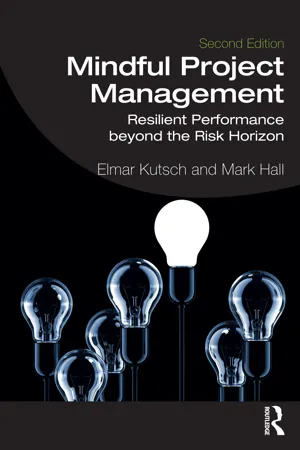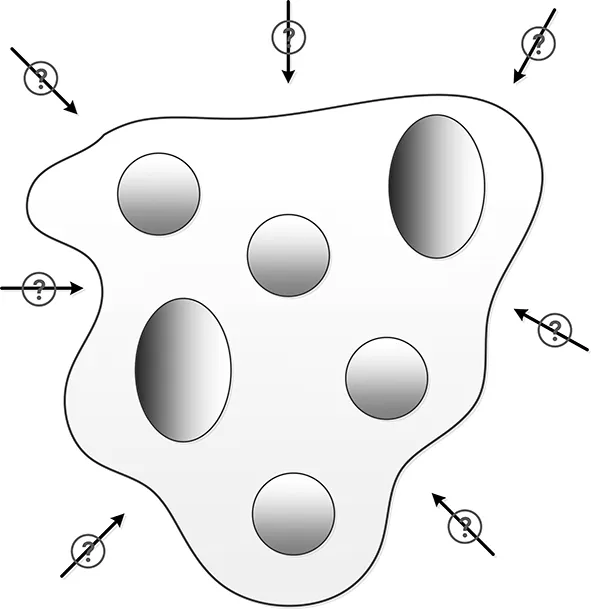This chapter is about those attacks on this entity we call a project. In this book, we will introduce you to ideas and mechanisms for resilience in project management and provide you with insights into how adversity can jeopardise project performance.
A litany of project failure
The media and literature are littered with examples of projects that have failed in terms of key parameters: time, budget and performance. They come from all sectors and all industries and can be found in the public and private sector. Complex projects with high levels of risk and uncertainty, such as military procurement, major construction, information technology and new product development projects are particularly vulnerable to failure.
For example, Berlin’s Brandenburg Willy Brandt Airport (BER) is designed exactly like any other modern airport. It was expected to open in 2012, to replace the ageing airports of Tegel (in former West Berlin) and Schönefeld (in former East Berlin). In early 2019, though, this project showcase of German efficiency and engineering prowess was eerily deserted; no passengers had checked into this airport let alone taken off from it. Up to 90 km of cables were incorrectly laid, thousands of doors wrongly numbered, and the fire system was faulty.
The expected budget for this project amounted to roughly €2 billion. Six years later, though, it has been estimated to reach €7.5 billion, and the costs of maintaining an empty shell of an airport run into the millions of euros every year.
Meanwhile, in the United States, another project that hit the headlines refers to the municipal water supply project at Flint, MI. In early 2014, city officials decided to switch their city’s water supply from the Detroit Water and Sewerage Department, who sourced their water from Lake Huron and the Detroit River, to the Karegnondi Water Authority, who pumped their water from the Flint River. The justification for such a switch should have resulted in savings in the range of $5 million.
To provide a safe supply of water to the inhabitants of Flint, corrosion inhibitors had to be added to the water treatment process. For reasons still under contention, this did not happen. The deteriorating water pipes started to corrode, causing the metals in the pipes to leach. Increased level of both iron and lead in the water were downplayed by city officials until it reached the airwaves of the national press.
In January 2016, both state and federal levels of government declared Flint an official disaster. As a short-term measure, the city switched back to sourcing their water from their original supplier, 18 months after the first switch. Significant damage to pipes requires an entire overhaul to the city’s water supply system.
These are just two examples of major projects that have run into trouble and have failed to recover from such adversity. A common theme running through the many cases of failed projects is that, despite having applied a plethora of deterministic project management practices, they still do not deliver as expected, and the teams responsible for their delivery seem to lack the responsiveness to recover from failure. This is not because their approach to compliance by ‘designing’ adversity out of the project was inadequate. It is rather that the situation-specific novelty in each case is too much for the past-informed rules and procedures and that the organisations’ ways of working do not accommodate the emerging reality of the situation.
This book looks at weaknesses with current thinking in project management and how project managers can develop a state of awareness and responsiveness – an art to be mindful – in the face of adversity. Our objective is to help project managers find ways to notice more, interpret adversity more realistically, prepare themselves better for it, and contain and recover from it quicker. In short, the book is about making projects and project managers more resilient through mindful project management.
The emergence of project management
We need to start with a common understanding of what is meant by the term ‘project’. A project is commonly defined as a temporary endeavour with a specific beginning and end. It is characterised by the achievement of unique goals and objectives, and resources are limited. In contrast to business-as-usual activities, which are repetitive and permanent, projects often involve greater uncertainty and complexity. At the outset of a project, managers may not know or understand exactly what they are required to achieve and how best to go about it, nor what changes and problems may be thrown at them. The discipline of project management has emerged in an attempt to aid managers facing these challenges.
A brief history of project management
Mankind has achieved magnificent project outcomes for thousands of years. Marvels such as the Pyramids of Giza, the Great Wall of China, the Parthenon, and Stonehenge were constructed without modern-day techniques and software tools, although often with abundant yet expendable human resources. The twentieth century, though, experienced a new age of industrialisation and a drive towards repeatability of manufacturing outputs, mass-production and the pursuit of greater order and efficiency. Considered a milestone in the development of project management, Henry Gantt (1861–1919) developed the Gantt chart, which was quickly co-opted by managers to help control the project process.
The 1950s marked the emergence of the ‘Program Evaluation and Review Technique’ (PERT), deployed and exercised in the Polaris missile submarine programme. PERT displays how much time (involving the most likely, optimistic, and pessimistic estimates) is allocated to a component of a project, such as a project task. This enables projects to be analysed statistically. It lays down interdependencies between these components that allow the definition of a critical path; any deviation or change from that path will have an automatic influence on the end date of the project.
Such techniques are now commonly applied in planning modern projects and often represent the core technique of management by planning. However, it was not until the 1960s that the development of these techniques led to the recognition of project management as a discipline. In 1969 the Project Management Institute (PMI) was founded. This not-for-profit project management organisation is one of the most recognised member associations in the world. It advocates providing project managers with a universal set of tools and techniques to manage projects successfully.
As a consequence, the Project Management Body of Knowledge (PMBOK) Guide was published in 1987. Over the years, further internationally recognised frameworks and sourcebooks in project management have been developed, such as PRINCE2 and the Association for Project Management’s (APM) Body of Knowledge. They form part of a wider narrative advocating a set of normative procedures that, if applied correctly, are claimed to lead to success.
Project success and failure
Project success is a tricky concept. Projects are often assessed on the classic ‘iron triangle’ objectives of time, cost, and quality. Was it delivered on time, on budget, and did it meet the original performance specifications? If we rely on these three measures, then it may not be surprising if failure can be perceived as commonplace, but there are problems with this for several reasons. Criteria drawn up in the early stages may turn out not to be correct. Knowledge-generation is inherent in many projects, and initial expectations of accurate schedules and financial plans may be unrealistic. We need to be sensible about what we expect to find out as part of the work and adjust expectations accordingly. We do not argue with the importance of time, cost, and quality, but they do represent a rather limited, short-term perspective of what constitutes success – and failure – in projects. Longer-term user or customer satisfaction after a project has been implemented, or the development of new organis...

